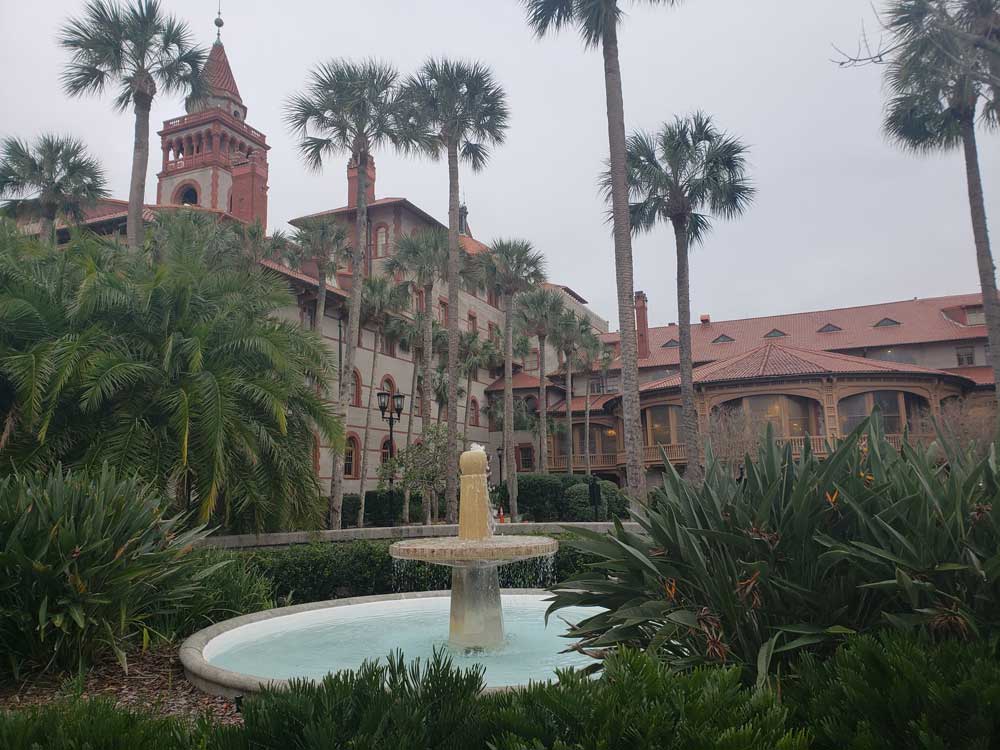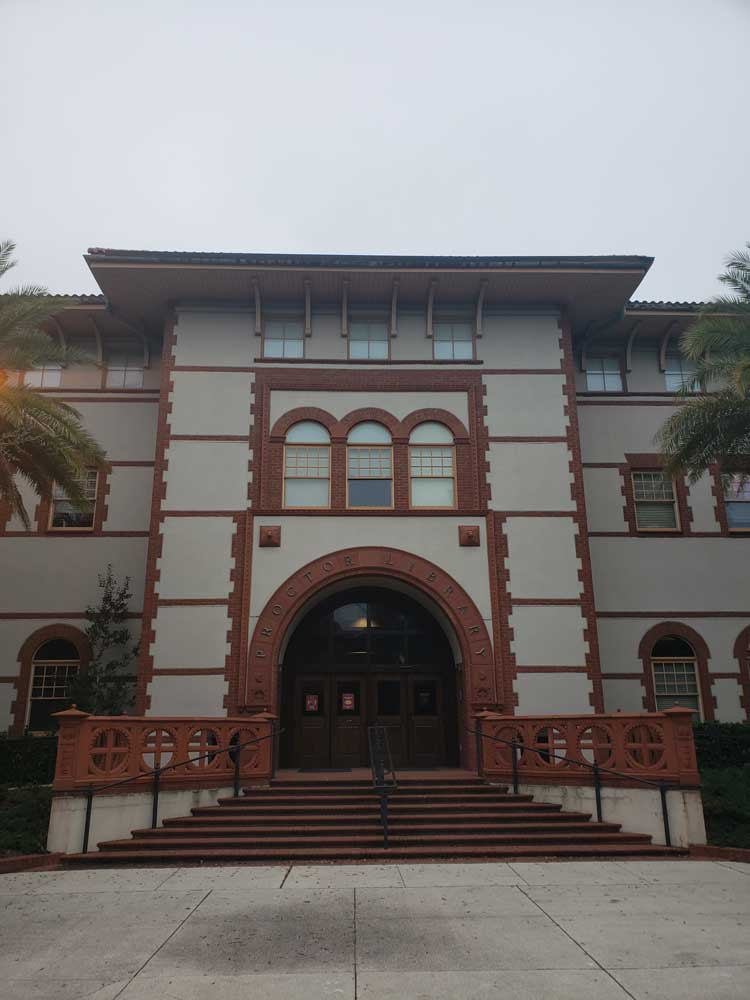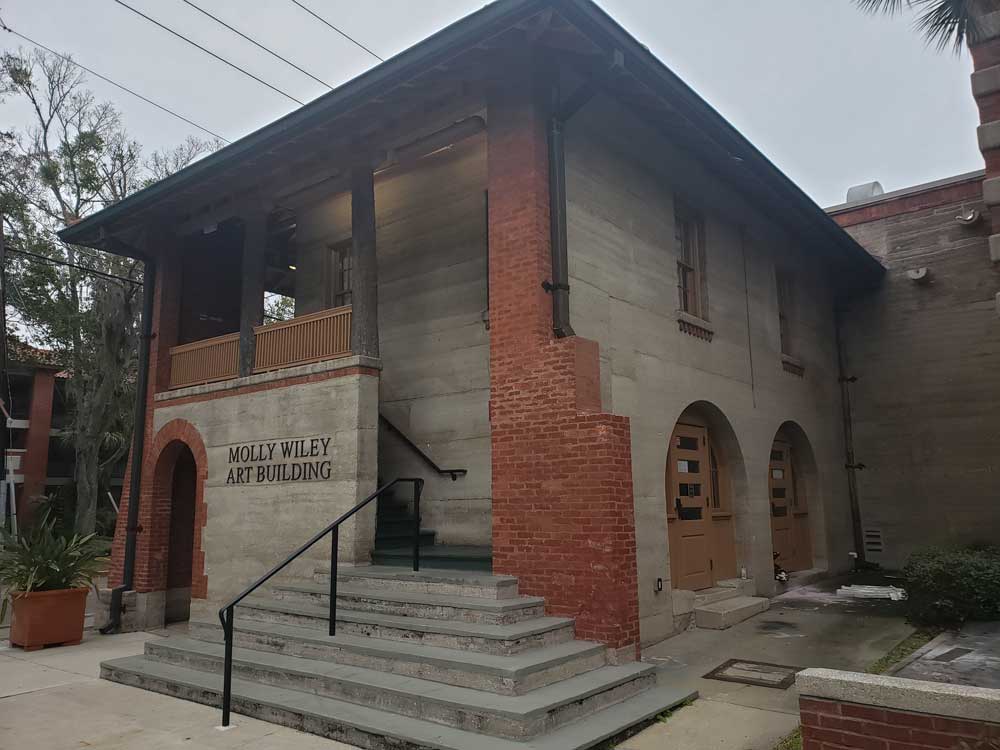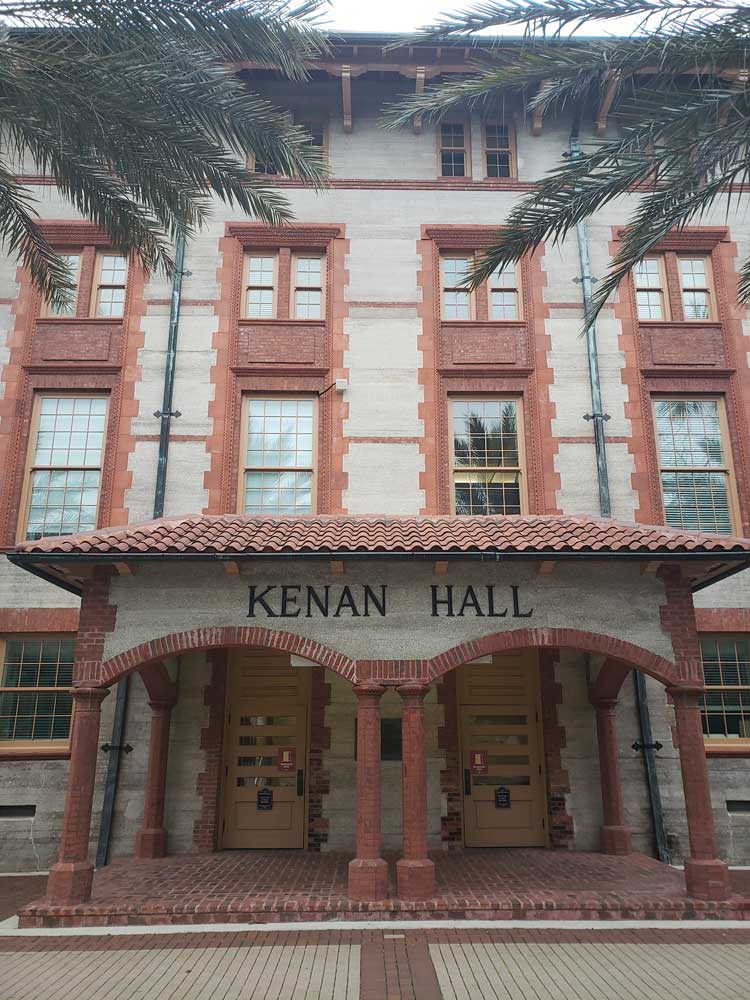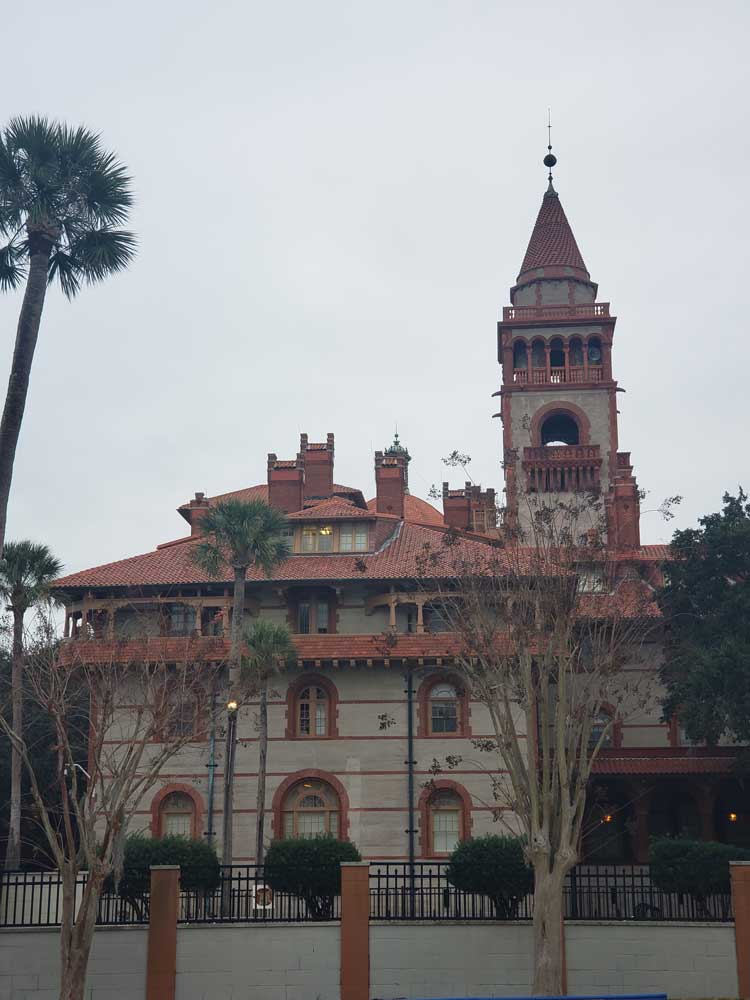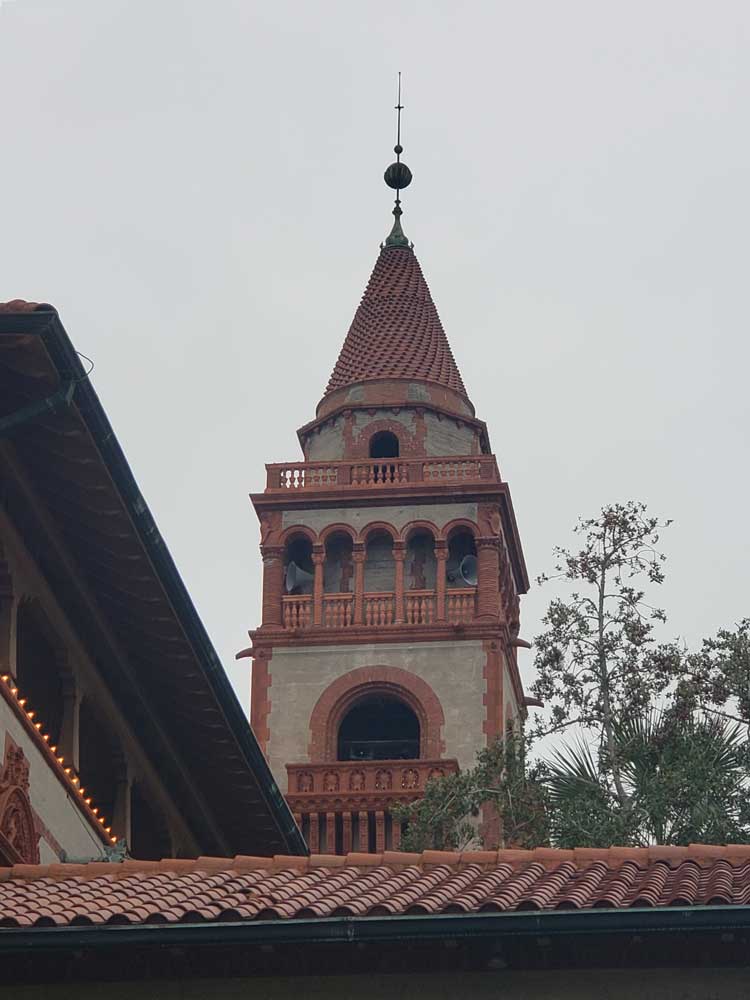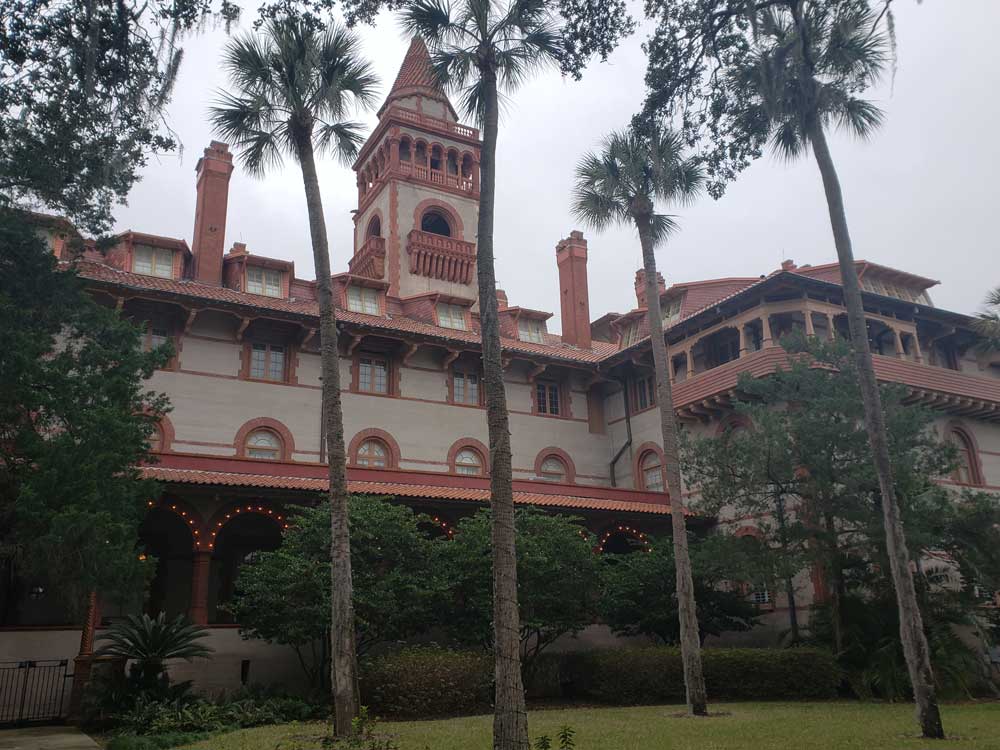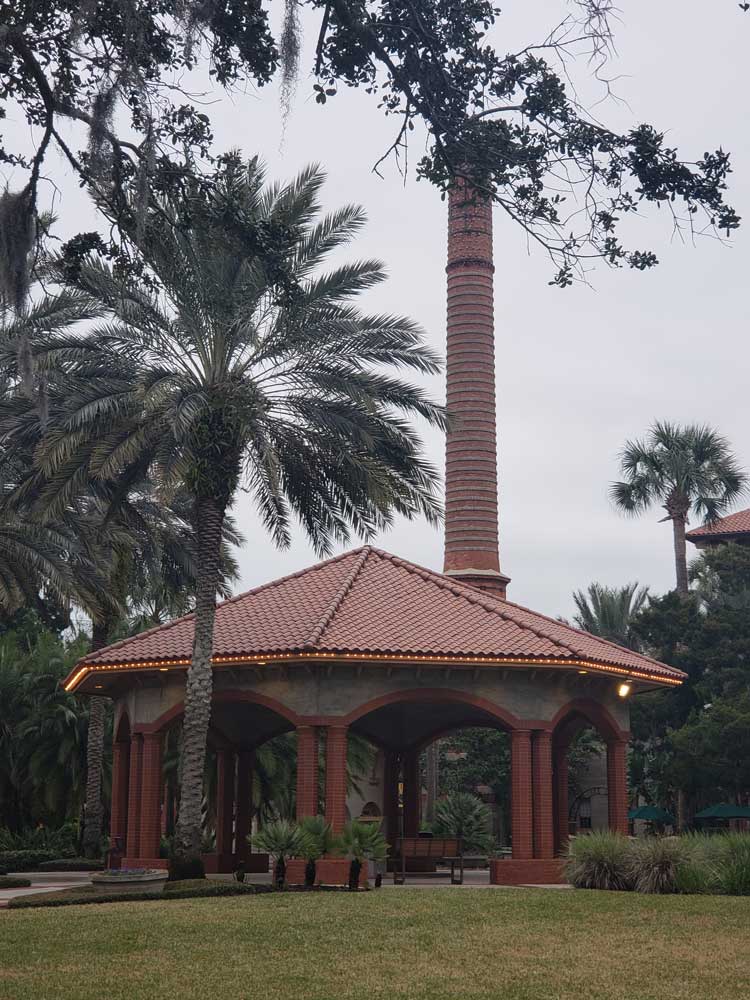Founded in 1968, the campus comprises 19 acres, the centerpiece of which is the Ponce de León Hotel, built in 1888 as a luxury hotel
General Information
How to Get There
Head south on Water St toward Mulberry St. Turn right onto Joiner St. Turn left onto A1A Scenic and Historic Coastal Byway/San Marco Ave. Continue to follow A1A Scenic and Historic Coastal Byway. Turn right onto Orange St. Turn left onto Cordova St. Turn right
Overview
The hotel was built by millionaire developer and Standard Oil co-founder Henry M. Flagler and completed in 1888. The hotel was designed in the Spanish Renaissance style as the first major project of the New York architecture firm Carrère & Hastings, which would go on to gain world renown. The hotel was the first of its kind constructed entirely of poured concrete, using the local coquina stone as aggregate. The hotel was also one of the first buildings in the country wired for electricity from the onset, with the power being supplied by DC generators installed by Flagler's friend, Thomas Edison. The original building and grounds of the hotel are today a part of Flagler College.
Background
Henry Flagler spent the winter of 1882-83 in St. Augustine where he became interested in the historic city and its potential for a winter resort for wealthy northerners. He was particularly impressed with the poured concrete construction method of the Villa Zorayda, the recently constructed winter home of businessman Franklin Smith. Flagler offered to buy it for his wife, but Smith would not sell it to him. Flagler returned to St. Augustine in 1885 and made Smith an offer. If Smith could raise $50,000, Flagler would invest $150,000 and they would build a hotel together. Smith couldn't come up with the funds, so Flagler began construction of the 540-room Ponce de León Hotel by himself, spending several times his original estimate. Smith helped train the masons on the mixing and pouring techniques he used on the Zorayda. Two years later, Smith would build the Casa Monica Hotel opposite the Ponce de Leon, on land sold to him by Flagler.
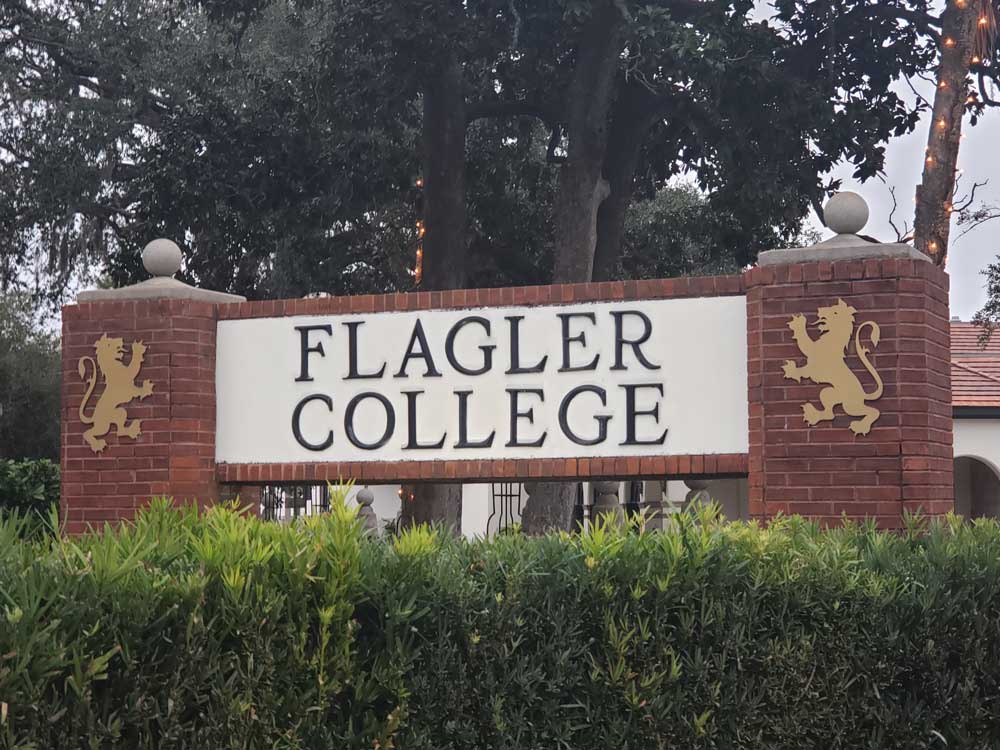
Design and Construction
The Ponce de Leon Hotel was built on land that was part of a former orange grove and salt marsh. Various famed and notable designers, architects, and painters worked on the project. The hotel was designed by the New York architecture firm of John Carrère and Thomas Hastings, as one of their first major projects. Soon after, they would design the New York Public Library in Manhattan. Interior design of the hotel was headed by Louis Comfort Tiffany, and his company, Tiffany & Co, which provided the stained glass windows in the hotel's dining room. The hotel's furnishings were provided by Pottier & Stymus, a prominent New York City furniture and design firm at the time. Bernard Maybeck, whose later designs include the Palace of Fine Arts in San Francisco, served as a draftsman on the project and designed its 540 guest rooms. Architect Emmanuel Louis Masqueray, who had recently arrived from Paris and would go on to supervise the 1904 World's Fair in St. Louis, created the watercolor elevation of the hotel. Murals in the rotunda and dining room were completed by the well-known artist George W. Maynard, who a decade later painted murals in the Treasures Gallery at the Thomas Jefferson Building of the Library of Congress.
Operation
The Ponce de Leon Hotel opened on January 10, 1888. It was an instant success, and within two years, Flagler opened another hotel in St. Augustine, the Alcazar. Just across the street, it absorbed guests that the Ponce could not accommodate and eased the massive demand. A year later, in 1888, he purchased Franklin Smith's troubled Casa Monica Hotel, renovating it and reopening it as the Cordova. The success convinced Flagler that Florida was viable and ripe for development, and it encouraged him to continue development south along the state's east coast, as he attempted to create an "American Riviera". With the success of the Ponce de Leon, Flagler realized the need for a sound transportation system to support his resorts, and he purchased short-line railroads to form what would later become known as the Florida East Coast Railway. He modernized the existing railroads for them to accommodate heavier loads and more traffic, allowing guests to reach the hotel from New York and other northern cities. Over the next two decades, Flagler expanded the system further south, until it reached Key West.
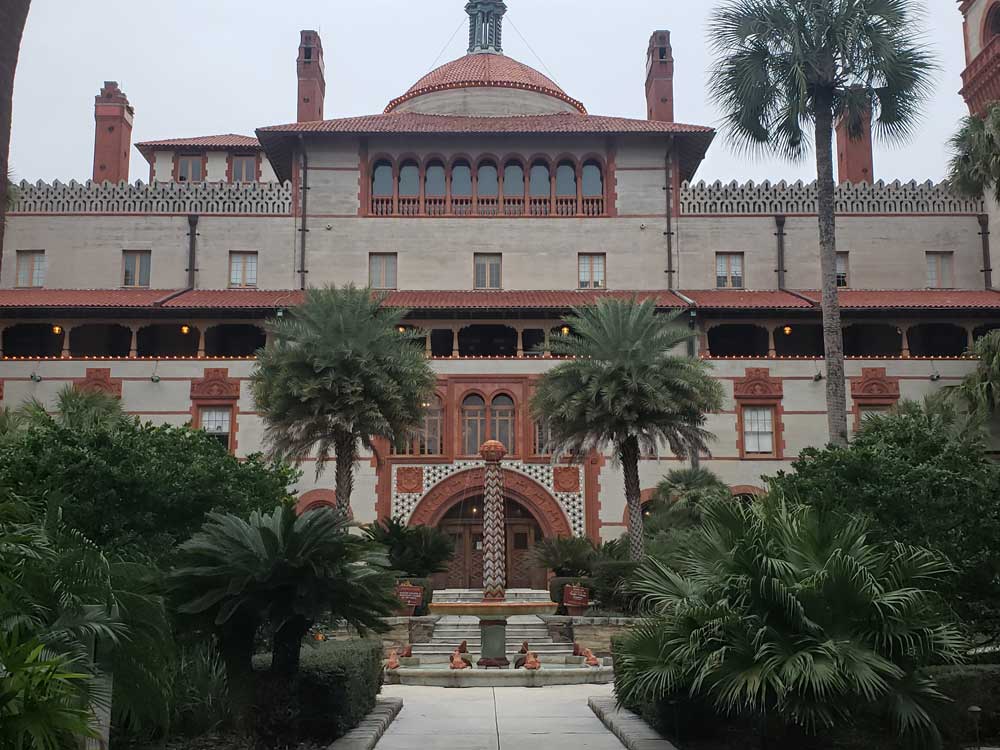
Noted personalities that stayed at the hotel during its operation included President Grover Cleveland, Mark Twain, President Theodore Roosevelt, Somerset Maugham, Babe Ruth and Babe Didrikson.
The hotel saw declining visitor numbers throughout the 1910s and 1920s. A major cause of this was the continuous extension of Flagler's railway, which allowed tourists to vacation in the warmer, tropical climates further south, giving rise to cities like West Palm Beach and Miami. However, even as the Alcazar and Cordova Hotels closed, the Ponce remained open and was one of three Flagler hotels in the state to survive the Great Depression and operate into the mid-20th Century.
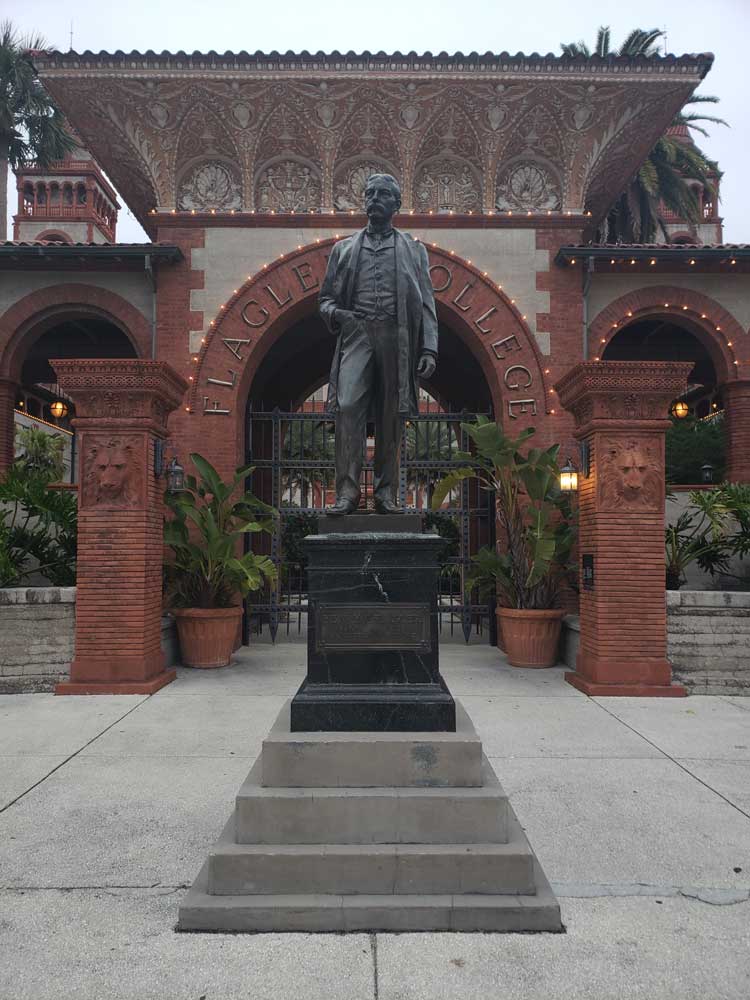
Flagler College
In 1968 the hotel became the centerpiece of the newly-established Flagler College. Beginning in 1976, with the nation's bicentennial anniversary, Flagler College embarked on an ambitious campaign to restore the hotel and other Flagler-era campus buildings to their original grandeur. In 1988 the College celebrated the centennial of the Ponce de Leon Hotel, and a decade later students created the Flagler's Legacy program, which provides guided historic tours of the former hotel to thousands of visitors annually.
This article uses material from the Wikipedia article "Flagler College" which is released under the Creative Commons Attribution-Share-Alike License 3.0
